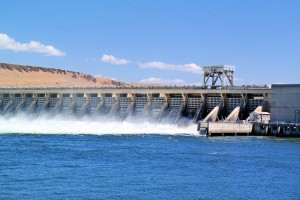
New Delhi: In order to enhance water security in the country and support sustainable development, the Government of India today signed a $250 million loan agreement with World Bank for the Second Phase of Dam Rehabilitation and Improvement Project (DRIP Phase II). The money will be used to make existing dams and communities safe and resilient across India.
The Ministry of Jal Shakti, ten (10) States namely Chhattisgarh, Gujarat, Kerala, Madhya Pradesh, Maharashtra, Manipur, Meghalaya, Odisha, Rajasthan, and Tamil Nadu and the Central Water Commission attended the loan signing ceremony. The balanced US$250 million external funding from Asian Infrastructure Investment Bank (AIIB) is under consideration.
This DRIP Phase II is the first phase of externally aided DRIP Phase II and Phase III, approved by the Centre in October 2020. The Scheme has the participation of nineteen States and three central agencies and the budget outlay for both phases is Rs. 10,211 crore for an implementation period of ten years. The Scheme will be implemented in two phases, each of six years’ duration, with two years’ overlap.
The Scheme is especially focused on mitigating the risks of dam failure and ensuring safety of people, riverine ecology and property located downstream of these selected dams, through structural as well as non-structural measures like physical rehabilitation, preparation of Operation and Maintenance Manuals, Emergency Action Plans, Early Warning System and various other measures.
Life of these selected reservoirs will be extended further by addressing health and safety concerns of these selected dams; in turn, these assets will provide planned benefits efficiently for longer period to public at large in terms of various direct benefits like irrigation, drinking water, hydel power, flood control, the Ministry of Jal Shakti stated.
“This new Scheme will strengthen dam safety initiatives taken by Government of India through physical rehabilitation of selected dams by addressing various concerns to improve safety and operational performance, institutional strengthening in various ways, incidental revenue generation for sustainable operation & maintenance of dams etc.,” the Ministry of Jal Shakti stated. It informed that the Scheme is designed to infuse global know-how, innovative technologies in dam safety.
According the to Ministry, another major innovation envisaged under the project, that is likely to transform dam safety management in the country, is the introduction of a risk-based approach to dam asset management that will help to effectively allocate financial resources towards priority dam safety needs. Also, Scheme implementation will equip the Indian dam owners to gear up their human resources to comprehensively handle many important activities envisaged in proposed Dam Safety Legislation.
The programme will enable states and dam owners to extend these safety protocols and activities beyond the selected dams to all other dams within their jurisdiction, overall enhancing the culture of dam safety in the country, the Ministry stated.
This programme complements the provisions in the Dam Safety Bill 2019, by ensuring capacity building of the dam owners as well as the proposed regulators, as well as creating necessary protocols for dam safety. It is likely to generate employment opportunities equivalent to approximately 10,00,000 person days for unskilled workers, and 2,50,000 person days for working professionals, the Ministry said.
India ranks third globally after China and the United States of America, with 5334 large dams in operation. In addition, about 411 dams are under construction at present. There are also several thousand smaller dams. These dams are vital for ensuring the water security of the Country. Indian dams and reservoirs play an important role in the economic and agricultural growth of our country by storing approximately 300 billion cubic meter of water annually.
These dams present a major responsibility in terms of asset management and safety. Due to deferred maintenance and other health issues, these dams have associated risks in case of failure. The consequences of dam failure can be catastrophic, in terms of loss of human life and property, and damage to ecology.
The Centre claimed that the first phase of the DRIP programme, which covered 223 dams in 7 states, improved the safety and operational performance of selected dams, along with institutional strengthening through a system wide management approach. The first phase was recently closed in March 2021.
In addition to physical rehabilitation, as mentioned before, equal emphasis has been given for capacity building of dam owners in order to ensure availability of trained and skilled manpower for better operation of dams during all seasons in a year. Customized training programmes for various technical and managerial aspects will assist dam owners to create a pool of knowledge to deal with matters of dam safety confidently and scientifically.
– global bihari bureau





